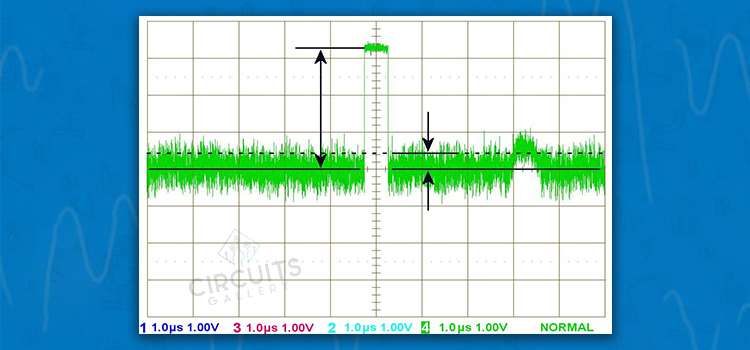How to Convert SNR to dB? A Complete Step-by-Step Guide
SNR is a crucial statistic in various industries, evaluating signal strength and dependability for various applications. This is commonly represented by decibels (dB). Converting SNR to dB is straightforward, providing a practical way to express and contrast signal strength against background noise.
In this article, let’s get more specifics regarding this conversion.

What is SNR?
A signal-to-noise ratio, commonly abbreviated as SNR or S/N, is a measurement of the intensity of the desired signal in comparison to background noise (unwanted signal) in analog and digital communications. By comparing the two levels and returning a ratio, a predefined formula may be used to calculate SNR and assess if the noise level is interfering with the desired signal.
The signal-to-noise ratio (SNR) is a crucial factor in various systems, such as data collection, communication, audio, radar, and imaging.
A positive SNR increases signal quality, while a negative or zero ratio is zero. Low SNR indicates distorted signals, while high SNR indicates clear, easy detection or interpretation.
How to Convert SNR to dB?
SNR is calculated using various formulas based on signal and noise measurement and characterization. It is typically expressed in dB, a logarithmic scale. Other logarithm bases or factors may be used depending on usage.
We can determine Signal-to-Noise Ratio (SNR) by knowing signal strength and noise power, which can vary across various signal types like audio, voltage, or digital data. The general formula to determine SNR in decibels (dB) is as follows:
SNR = Psignal/Pnoise
Here:
- Psignal is the power of the signal.
- Pnoise is the power of the noise.
It is necessary to measure both the signal and the noise in the same way, for instance, as voltages across the same impedance. The ratio can also be calculated using the root mean squares.
SNR = Psignal/Pnoise = (Asignal/Anoise)2
Here A is the root mean square (RMS) amplitude (for example, RMS voltage).
Signal and noise can now be represented in decibels (dB), according to the definition of a decibel, as follows:
Psignal,dB = 10*log10(Psignal)
Pnoise,dB = 10*log10(Pnoise)
In a similar way, we can also express SNR in dB.
SNRdB = 10*log10(SNR)
By the definition of SNR,
SNRdB = 10*log10(Psignal/Pnoise)
Here’s a step-by-step procedure for this conversion:
Gather Data (Step 1)
The power of the signal (Pssignal) and the power of the noise (Pnoise) must be measured or ascertained. To calculate the strength of a signal, we need to use appropriate tools or computations, such as a power meter, and ensure consistent power levels in units like watts or milliwatts.
SNR Ratio Calculation (Step 2)
To determine the SNR ratio, we must divide the signal power by the noise power.
SNR = Psignal/Pnoise
Convert to dB (Step 3)
The SNR ratio produced in Step 2 will now be transformed using the logarithm (base-10 logarithm), and the result will be multiplied by 10 to get the SNR in decibels.
SNRdB = 10 * log10(SNR)
Analyze the Outcome (Step 4)
The final SNR number, expressed in dB, indicates the strength of a signal compared to noise. Higher SNR indicates a stronger signal with less interference, while lower SNR indicates a weaker signal with higher errors.
Example
Let’s use an example to show how to translate SNR to dB. Consider a scenario where the background noise has a power of 10 mW and the signal is 100 mW.
Step 1:
Psignal = 100 mW
Pnoise = 10 mW
Step 2:
As, SNR = Psignal / Psignal
So, SNR = 100 mW / 10 mW = 10
Step 3:
SNRdB = 10 * log10(10) ≈ 10 * 1
So, SNRdB ≈ 10 dB
Step 4:
An acceptable SNR for dependable signal transmission is 10 dB, which means that the signal is 10 times stronger than the noise.
What is 3dB SNR?
A signal-to-noise ratio (SNR) of 3 dB indicates equal signal and noise strength but is vulnerable to deterioration and errors. A high SNR score indicates a strong signal compared to noise. A 3 dB SNR indicates equal strength but is susceptible to interference and corruption.
What is the SNR Value of 25 dB?
A signal with a 25 dB signal-to-noise ratio (SNR) is considered strong and clear, with a 25-decibel increase in signal power compared to background noise. A 20 dB or higher SNR is recommended for data networks, while a 25 dB or higher SNR is recommended for voice applications networks.
A List of SNR Values Ranging from good to bad
| >40dB SNR | Excellent signal (5 bars) | Always associated; lightning-fast |
| 25dB to 40dB SNR | Very good signal (3 – 4 bars) | Always associated; very fast |
| 15dB to 25dB SNR | Low signal (2 bars) | Always associated; usually fast |
| 10dB – 15dB SNR | Very low signal (1 bar) | Mostly associated; mostly slow |
| 5dB to 10dB SNR | No signal | Not associated; no go |
Why is SNR Important in Embedded Cameras?
High SNR in cameras is crucial for embedded vision applications, such as people counting, demography analysis, crop detection, object recognition, and sample analysis. It is essential for low-light camera modules, where noise levels can significantly impact image quality compared to normal lighting conditions.
To Conclude
The signal-to-noise ratio (SNR) can be expressed in decibels (dB) to improve data analysis, communication, and system performance. Maintaining a high SNR value ensures optimal signal quality and reduces noise’s impact on information.
Subscribe to our newsletter
& plug into
the world of circuits